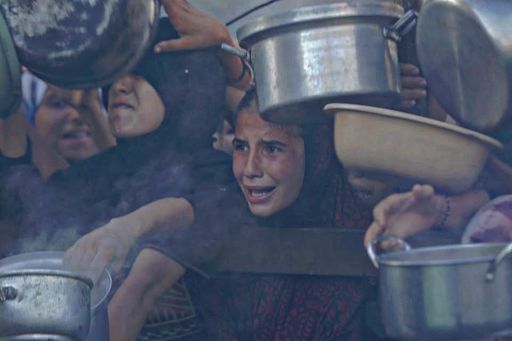Western leaders have denounced the release of two recent videos by Hamas showing emaciated Israeli hostages held in Gaza, describing them as acts of “abject cruelty” and propaganda.
But activists say such condemnations ring hollow in the face of continued Western backing for Israel’s genocidal policies that have turned Gaza into what UN officials now call “the hungriest place on earth.”
What triggered the reactions?
On August 1, Hamas published two separate videos of hostages taken during the October 7 attack on the Nova Music Festival.
One man, identified as Evyatar David, is seen digging what he believes will be his own grave inside a tunnel. “This is the grave where I think I will be buried in,” he says.
The second video features Rom Braslavski, visibly weakened and in tears. “I have no food, nothing to drink from morning to night,” he says.
Braslavski and David are among the 49 hostages taken during Hamas's 2023 attack who are still being held in Gaza, including 27, the Israeli military says are dead.
In a statement issued on Sunday, Hamas Political Bureau member Izzat al-Rishq said the Israeli government bears full responsibility for the hostages’ condition, saying the starvation and thirst policy imposed on Gaza’s population by Prime Minister Benjamin Netanyahu’s government is now affecting Israeli captives as well.
He recalled that in previous prisoner exchanges, Israeli captives were released in good physical and mental health but claimed they now suffer from hunger, weakness and weight loss — mirroring the plight of besieged Gaza residents.
What are Western leaders saying?
Western leaders were quick to post issue statements of condemnation following the circulation of the videos. UK Foreign Secretary David Lammy described the images of hostages being “paraded for propaganda” as “sickening” and called for their release.
“Every hostage must be released unconditionally,” Lammy wrote on X on August 3. “Hamas must disarm and have no control over Gaza.”
In a similar vein, French President Emmanuel Macron called the videos as “abject cruelty,” saying “this is what Hamas embodies.”
“France’s absolute priority and imperative is the immediate release of all hostages,” he wrote on X.
“We must have the total demilitariation of Hamas, its complete exclusion from any form of governance and the recognition of Israel by the state of Palestine,” he added.
EU foreign policy chief Kaja Kallas said the images "are appalling and expose the barbarity of Hamas", calling for the release of "all hostages... immediately and unconditionally".
What is happening in Gaza in the meantime?
The videos began circulating at a time when UN-backed agencies have said the "worst-case scenario of famine is currently playing out" in Gaza, with malnutrition deaths reported daily. Against this backdrop, activists view the condemnations as a jarring irony.
“No one should be starved. Not Israeli hostages. Not Palestinian civilians. But until Western leaders apply this principle universally, rather than exclusively, their condemnations ring hollow,” says Dylan Evans, a pro-Palestine activist from the UK.
“Their moralism is not universal; it is tribal. And as long as it remains so, they have no standing to lecture the rest of the world on ethics, dignity, or civilisation,” he tells TRT World.
Since May 2024, Israeli forces have imposed severe restrictions on humanitarian aid entering Gaza.
Since then, mounting global outrage over haunting images of skeletal children and daily reports of starvation deaths has done little to shift Israel’s blockade.

Has anything changed in aid access?
In recent days, Israel marginally increased the number of aid trucks permitted to enter the besieged territory under pressure.
But aid groups and Palestinians warn the changes have only been incremental and note that much of what Israel does allow in is looted or diverted in chaotic circumstances.
Gaza’s Government Media Office said on Monday that Israel had allowed in just 674 aid trucks since July 27 – only 14 percent of the strip’s minimum daily requirement of 600 trucks.
Recent months have already been marked by chaos for Palestinians, many of whom have been left with no choice but to risk their lives to reach food at Israeli- and US-run so-called ‘Gaza Humanitarian Foundation’ distribution points described by human rights groups as “death traps.”
Nearly 1400 people have been killed trying to grab the aid, according to the UN. Witnesses say Israeli troops often open fire on crowds around the aid trucks, and hospitals have reported hundreds killed or wounded.
As early as May 2025, UN OCHA spokesperson Jens Laerke warned that Israel’s aid restrictions had effectively turned Gaza into “the hungriest place on Earth.”















